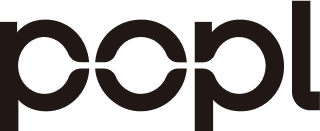In the modern business world, effectively distributing business cards is crucial for networking and establishing professional connections. While traditional business cards have long been a staple, the advent of digital business cards offers a cost-effective and environmentally friendly alternative.
This guide will walk you through budgeting for business cards, understanding their lifespan and usage, exploring potential distribution channels, and knowing when and why you should reorder your cards.
By leveraging both traditional and digital strategies, you can ensure your contact information reaches the right audience, enhancing your professional presence and networking efficiency.
The Importance of Business Cards in Networking
In today's digital age, you might wonder if business cards still hold their ground.
The answer is a resounding yes!
Business cards, especially digital business cards, remain a cornerstone in professional networking. They’re not just about sharing contact information; they’re a representation of your personal brand, an introduction to your professional persona, and a key tool in building meaningful connections.
Business cards facilitate a seamless exchange of information and leave a lasting impression. When you hand over a digital business card, you’re not only sharing your name and number but also providing a gateway to your professional world.
With interactive features, such as links to portfolios, social media profiles, and even personalized videos, digital business cards engage the recipient, showcasing your expertise and credibility.
Factors to Consider When Determining the Quantity of Business Cards to Order
Ordering the right number of business cards is crucial. Here are the key factors to consider:
Networking Frequency and Volume
How often do you attend networking events, conferences, or meetings? If you’re a frequent networker, you’ll need a larger supply of business cards.
For instance, if you attend an average of three networking events per month and meet around 20 new contacts per event, you would need approximately 720 business cards annually. This calculation ensures you have enough cards to cover spontaneous opportunities and follow-ups.
Industry and Role Requirements
Your industry and role significantly influence the number of business cards you should order. Sales professionals, for example, might need more cards than those in backend roles. In high-contact industries like real estate or marketing, the demand is naturally higher.
Sales professionals utilizing digital business cards report a 30% increase in client engagement, highlighting the importance of ample card availability.
Event-Specific Needs
Large events such as trade shows or conventions might require a substantial number of business cards. Estimate the number of attendees and how many you plan to connect with.
For a trade show with 500 attendees, aiming to network with at least 10% means preparing at least 50 business cards for that event alone.
Promotional Activities
If you’re launching a new product or service, or if you’re part of a promotional campaign, your business card demand will spike. Digital business cards can include promotional links, special offers, or QR codes directing recipients to your latest campaign, thereby enhancing your promotional efforts.
Business Card Design and Content Updates
Digital business cards offer the advantage of real-time updates. Unlike traditional cards, you can refresh content, add new achievements, or adjust your contact details without reprinting. This flexibility allows for smaller, more frequent orders, ensuring your cards are always up-to-date.
According to Popl’s best practices, regular updates to your digital business card can lead to a 20% increase in recipient engagement.
Team Size and Distribution
For businesses, the number of employees requiring business cards affects the quantity needed. A company-wide implementation of digital business cards can streamline the process, ensuring all team members have access to updated and uniform contact information.
For example, if you have a sales team of 50 members, each attending monthly networking events, a collective order ensuring each member has 100 cards annually (totaling 5,000 cards) is a practical approach.
Environmental and Cost Considerations
Digital business cards are not only a modern choice but also an eco-friendly one. Traditional paper cards contribute to waste, with statistics showing that 88% of handed-out business cards are discarded within a week.
By switching to digital business cards, you reduce waste and demonstrate your commitment to sustainability.
Additionally, digital business cards eliminate recurring printing costs, offering long-term savings.
Analytics and Performance Tracking
Utilize analytics to track the performance of your digital business cards. Understanding how often your cards are shared, viewed, or interacted with can inform your reorder quantity.
For instance, if analytics show high engagement rates, you might need to increase your order to capitalize on this interest.
Personal Branding and Customization
Customize your digital business cards to reflect your unique brand and personality. Incorporate high-quality images, professional headshots, and well-produced videos to enhance their appeal.
The ability to personalize content for different target audiences means you can order specific quantities tailored to various networking scenarios.

Analyzing Your Networking Needs, Goals, and Opportunities
Understanding your networking needs is the first step in determining how many business cards to order. Begin by setting clear networking goals.
Are you aiming to expand your client base, explore new partnerships, or boost your professional visibility? Defining your objectives helps in estimating the quantity of business cards required.
Networking Frequency
Assess how often you engage in networking activities. For instance, if you attend weekly business meetups or monthly industry conferences, your card usage will be higher.
According to industry statistics, 95% of professionals still prefer in-person networking over virtual meetings, making physical or digital business cards indispensable tools.
Target Audience
Identify the types of professionals you aim to connect with. Are they in the same industry, potential clients, or strategic partners? Tailoring your business card content to suit different audiences can enhance its effectiveness.
For example, a realtor might include property links, while a marketer might highlight successful campaigns.
Event Types
Different events demand different strategies. Large-scale events like trade shows may require a higher volume of cards compared to smaller, intimate networking dinners. Make a list of upcoming events and estimate the number of potential contacts you plan to meet.
For example, if you’re attending a tech conference with 1,000 attendees and aim to connect with 5%, prepare at least 50 cards for that event.
Long-Term Goals
Consider your long-term networking goals. Are you planning to grow your business, enter new markets, or launch a new product?
Aligning your business card orders with these objectives ensures you’re prepared for future opportunities.
Calculating the Ideal Quantity Based on Expected Usage
Once you’ve analyzed your networking needs and goals, it’s time to calculate the ideal quantity of business cards to order. Here's a step-by-step guide:
Step 1: Estimate Monthly Usage
Start by estimating how many business cards you use in a typical month. This includes regular meetings, events, and spontaneous networking opportunities. For example, if you attend two events per month and distribute 10 cards at each, your monthly usage is 20 cards.
Step 2: Account for Special Events
Factor in any special events or peak networking periods. For instance, if you have a major conference or trade show in the upcoming months, add the estimated number of cards needed for those events to your monthly usage. A large event might require an additional 50-100 cards.
Step 3: Calculate Annual Usage
Multiply your monthly usage by 12 to get an estimate of your annual business card needs. Add any special event requirements to this total. For example, if your monthly usage is 20 cards and you need an additional 100 cards for a major event, your annual requirement is 240 + 100 = 340 cards.
Step 4: Add a Buffer
It’s wise to add a buffer to your calculations to cover unexpected opportunities or last-minute events. A 10-20% buffer is generally sufficient. In our example, adding a 15% buffer to 340 cards gives you approximately 391 cards. Round up to the nearest convenient number, so ordering 400 cards annually would be ideal.
Step 5: Review and Adjust
Regularly review your business card usage and adjust your orders accordingly. Track how often you update your card content, and consider smaller, more frequent orders if you make regular updates. Digital business cards offer the flexibility to update details in real-time, making smaller orders more practical and cost-effective.
Practical Example
Let’s put this into a practical example. Suppose you are a marketing manager attending the following:
- Monthly industry meetups: 2 events x 10 cards each = 20 cards/month
- Quarterly conferences: 4 events x 30 cards each = 120 cards/year
- Annual trade show: 1 event x 100 cards = 100 cards/year
Your monthly usage is 20 cards. For quarterly conferences, you need 120 cards annually, and for the annual trade show, you need 100 cards.
- Monthly Usage: 20 cards
- Quarterly Conferences: 120 cards/year
- Annual Trade Show: 100 cards/year
Calculate the total annual requirement:
- Monthly: 20 cards x 12 months = 240 cards
- Quarterly Conferences: 120 cards
- Annual Trade Show: 100 cards
Total: 240 + 120 + 100 = 460 cards
Add a 15% buffer for unexpected needs:
- 460 cards + 15% buffer (69 cards) = 529 cards
Rounding up, ordering 530 digital business cards annually would ensure you’re well-prepared for all networking opportunities while maintaining flexibility for updates.
Budgeting for Business Cards and Cost Implications
When budgeting for business cards, it’s essential to consider both the initial investment and the long-term savings, especially when transitioning from traditional to digital business card services.
Here, we'll break down the cost implications and guide you through a practical budgeting process.
Initial Costs
Design and Setup Fees:
- Traditional business cards often come with design and setup fees. These can range from $50 to $200 depending on the complexity of the design and the designer's experience.
- Digital business cards typically have lower initial costs. Some services offer free templates or minimal fees for customization, ranging from $0 to $50.
Printing Costs:
- The average cost of printing traditional business cards varies widely. For basic paper cards, you can expect to pay between $0.25 and $0.50 per card, while premium options can cost up to $2.00 per card. For a batch of 500 cards, this equates to $125 to $1,000.
- Digital business cards eliminate printing costs entirely. This offers significant savings, especially for companies that frequently update their information.
Recurring Costs
Reprinting and Updates:
- Traditional cards require reprinting whenever there are updates to contact information, which can add up quickly. This recurring expense includes both design and printing costs.
- Digital business cards allow for real-time updates at no additional cost, providing a more cost-effective solution over time.
Distribution Costs:
- Physical cards may incur distribution costs, especially if you need to mail them to contacts or clients.
- Digital business cards can be shared instantly via email, social media, or NFC technology, reducing distribution expenses.
Long-Term Savings
Switching to digital business card services can result in substantial long-term savings. According to industry data:
- Companies can reduce business card costs by up to 50% by transitioning to digital alternatives.
- The average company spends between $100 and $2,300 per person annually on traditional business cards. Digital options can cut this expenditure in half, saving significant amounts over time.

Understanding the Lifespan and Average Usage of a Business Card
The lifespan and usage of a business card are crucial factors to consider when planning your budget and strategy.
Lifespan of Traditional Business Cards
Short-Term Use:
- Studies indicate that 88% of traditional business cards are discarded within a week of being received.
- This high discard rate highlights the inefficiency and waste associated with paper cards.
Environmental Impact:
- Traditional business cards contribute significantly to paper waste. With 27 million cards printed daily and 7 million trees cut annually, the environmental implications are considerable.
Lifespan of Digital Business Cards
Extended Use:
- Digital business cards have a much longer lifespan as they reside on digital devices and can be updated in real-time. This ensures that the contact information remains current and relevant.
- The ability to update and customize digital cards means they remain useful and engaging for longer periods.
Environmental Benefits:
- Digital business cards are an eco-friendly alternative, reducing paper waste and conserving resources. By eliminating the need for physical cards, companies can significantly lower their environmental footprint.
Average Usage
Traditional Cards:
- The average professional might hand out 2 to 5 business cards per networking event. With frequent updates and reprints, the overall usage can become quite costly.
Digital Cards:
- Digital business cards can be shared an unlimited number of times without additional costs. This makes them ideal for high-volume networking and large events.
- The interactive nature of digital cards, which can include links to websites, portfolios, and social media, enhances their usability and value.
Practical Budgeting Example
Let’s consider a practical budgeting example for a mid-sized company with 50 employees:
Traditional Business Cards:
- Initial Design and Setup: $100 per design
- Printing Costs: $0.50 per card x 500 cards per employee = $250 per employee
- Total Initial Cost: $250 + $100 design fee = $350 per employee
- Annual Cost for 50 Employees: 50 x $350 = $17,500
Digital Business Cards:
- Initial Design and Setup: $50 per design
- Digital Platform Subscription: $10 per month per employee (if applicable) = $120 per year per employee
- Total Annual Cost: $50 (one-time design) + $120 (subscription) = $170 per employee
- Annual Cost for 50 Employees: 50 x $170 = $8,500
Savings:
- By switching to digital business card services, the company saves $17,500 - $8,500 = $9,000 annually.
Considering Potential Distribution Channels
Effectively distributing your business cards involves leveraging various channels to maximize their reach and impact. By identifying and utilizing multiple distribution avenues, you can ensure that your business cards reach the right audience at the right time.
Here are some key distribution channels to consider:
1. In-Person Networking Events
- Conferences and Trade Shows: These large-scale events are prime opportunities to exchange business cards with industry peers, potential clients, and partners.
- Meetups and Workshops: Smaller, more intimate settings allow for meaningful conversations and a personal touch when handing out your business cards.
- Professional Associations: Attending meetings or events hosted by industry associations can help you connect with like-minded professionals.
2. Business Meetings
- Client Meetings: Always have a stack of business cards ready to share with new and existing clients during face-to-face meetings.
- Partner and Vendor Meetings: Strengthen relationships by sharing your contact information with partners and vendors.
3. Office Visits
- Reception Area: Place a holder with your business cards at the reception desk for visitors to take.
- Sales Visits: Sales teams should carry business cards during client visits to ensure easy follow-up and contact.
4. Direct Mail Campaigns
- Personalized Letters: Include a business card in direct mail packages to add a personal touch and ensure recipients have your contact information.
5. Digital Channels
- Email Signatures: Incorporate a link to your digital business card in your email signature for easy sharing.
- Social Media: Share your digital business card through LinkedIn, Facebook, or Twitter to reach a broader audience.
- Webinars and Virtual Events: Provide a link to your digital business card during online presentations or virtual networking events.
How to Effectively Distribute Your Business Cards
Distributing your business cards effectively involves strategic planning and a proactive approach. Here are some tips to ensure your business cards reach their intended audience:
- Be Prepared - Always carry a sufficient number of business cards with you, regardless of where you’re going. A missed opportunity to share your contact information can mean a missed business opportunity.
- Personalize the Exchange - When handing out your business card, take a moment to engage in a meaningful conversation. This personal connection makes the exchange more memorable and increases the likelihood of follow-up.
- Follow Up - After exchanging business cards, follow up with a personalized email or LinkedIn message. Mention where you met and reference your conversation to reinforce the connection.
- Make It Accessible - Place your business cards in easy-to-access locations such as your desk, car, wallet, or briefcase. This ensures you can quickly hand them out when the opportunity arises.
- Leverage Technology - Use digital business cards for seamless sharing via email, social media, or QR codes. This modern approach not only saves paper but also makes it easy for recipients to store and access your contact information.
Reordering Business Cards: When and Why You Should Do It
Regularly reviewing and reordering your business cards ensures you’re always prepared for networking opportunities.
Here are some key considerations for when and why you should reorder your business cards:
- Depleting Stock - Keep an eye on your inventory. When your stock falls below a certain threshold (e.g., 20-30 cards), it’s time to reorder. This prevents running out of cards at crucial moments.
- Company Rebranding - If your company undergoes rebranding, including changes to logos, colors, or taglines, update your business cards to reflect the new brand identity. Consistency across all marketing materials reinforces your brand image.
- Updated Contact Information - Any changes to your contact information, such as a new phone number, email address, or office location, necessitate a reorder to ensure your business cards provide accurate and current information.
- Role or Title Changes - If you receive a promotion, change roles, or switch departments, update your business cards to reflect your new title and responsibilities. This ensures your contacts have the correct information.
- Seasonal Updates - Consider updating your business cards seasonally or annually to keep them fresh and relevant. This can include adding new certifications, awards, or updating your professional photo.
- Wear and Tear - Business cards that become worn, damaged, or outdated in appearance should be reordered. Presenting a pristine, professional-looking card leaves a better impression.
Practical Tips for Reordering
- Plan Ahead - Anticipate your needs and reorder before your stock runs low. This avoids last-minute rush orders and ensures you’re never without business cards.
- Review and Update - Before reordering, review your current business card design and information. Make any necessary updates to ensure accuracy and relevance.
- Bulk Orders for Cost Savings - Ordering in bulk can save on per-card costs. Evaluate your annual needs and order accordingly to maximize savings.
- Leverage Digital Solutions - If using digital business cards, ensure your subscription or service plan is up-to-date and consider any new features or updates that can enhance your card’s functionality.
By considering these distribution channels and strategies, you can effectively share your business cards with the right audience. Regularly reordering and updating your business cards ensures you’re always ready to make a strong, professional impression.
Conclusion
Effectively budgeting, distributing, and maintaining your business cards are essential steps in maximizing your networking potential and professional visibility.
By understanding the costs and benefits of both traditional and digital business cards, you can make informed decisions that align with your goals and budget.
Utilizing a variety of distribution channels ensures that your business cards reach their intended audience, while regular reordering and updating keep your contact information current and professional.
By following these guidelines, you can enhance your networking efforts, build lasting professional relationships, and maintain a strong, consistent brand presence.















